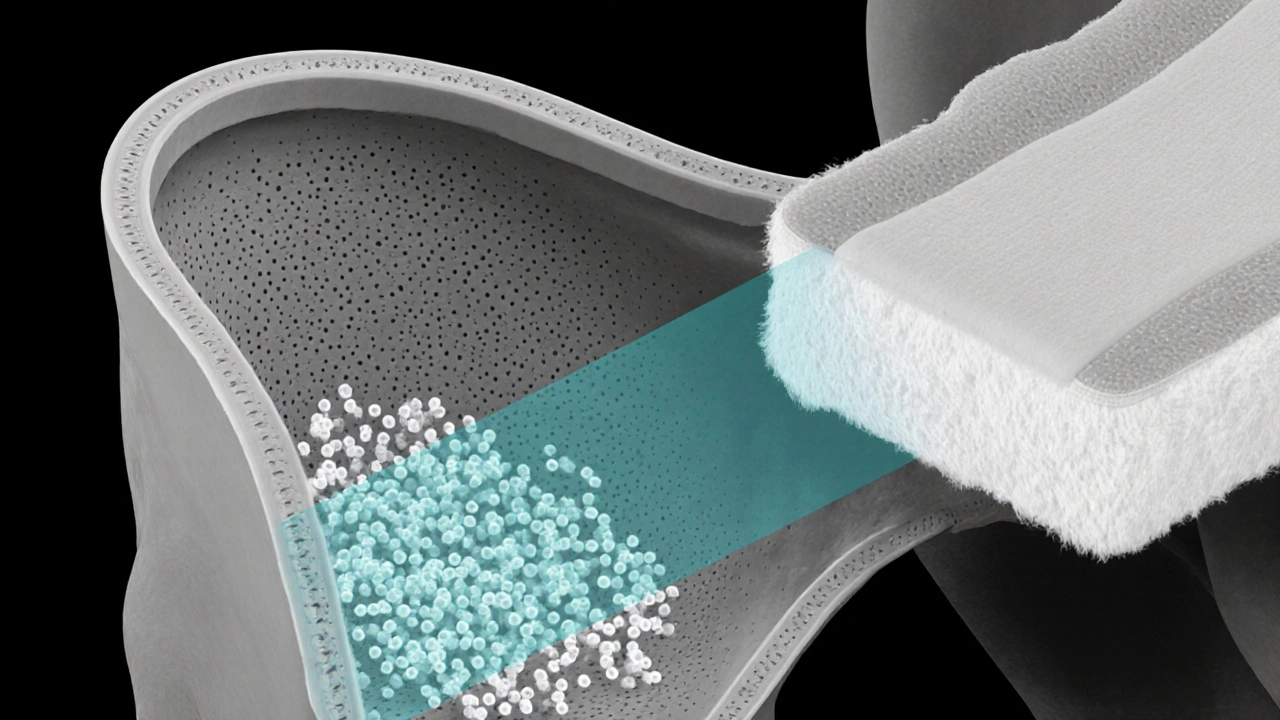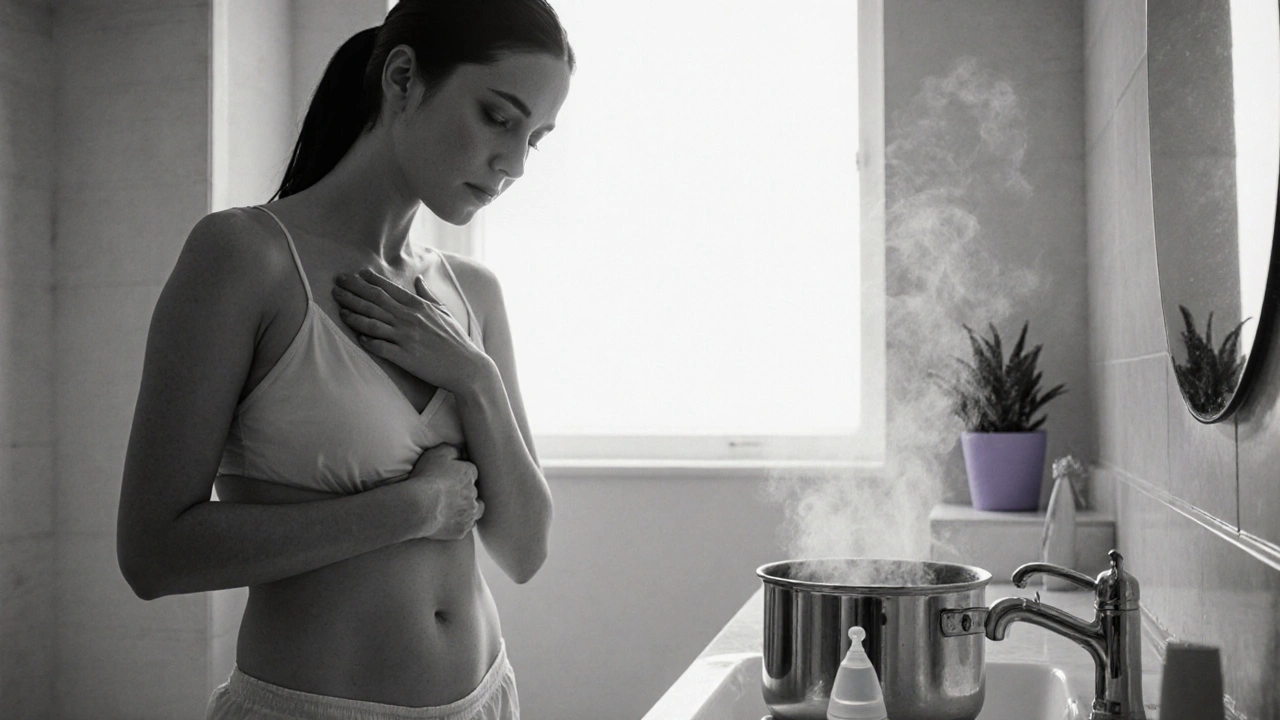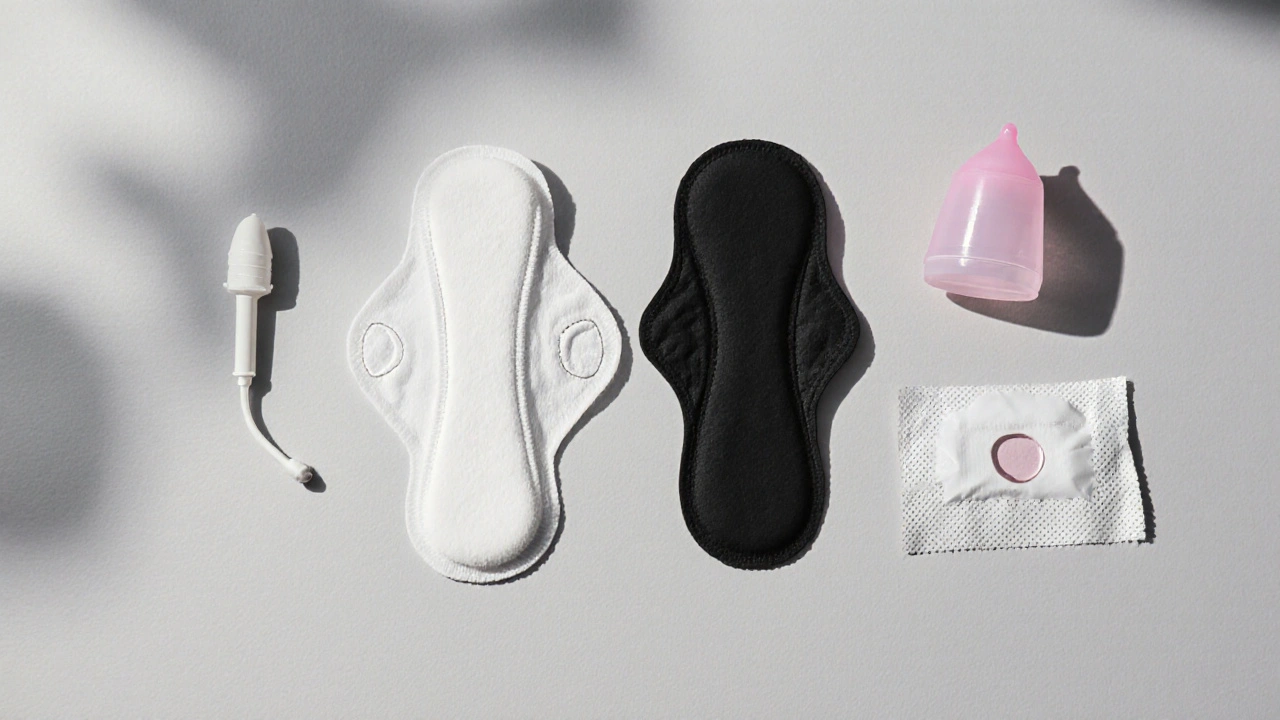Feminine Hygiene Product Selector
Personalized Product Recommendation Tool
Answer these quick questions to find feminine hygiene products that best support your vaginal health.
When it comes to staying comfortable and infection‑free, Feminine hygiene products are the daily choices that matter most. Vaginal infections can creep in when the right product isn’t selected, when you skip changes, or when chemicals irritate the delicate balance inside.
Why vaginal health matters
Inside every vagina lives a thriving community of Lactobacillus bacteria. These friendly microbes keep the pH around 3.8-4.5, which is too acidic for harmful yeasts and bacteria to grow. Disturb this balance-by using a product that traps moisture, adds fragrance, or leaves residue-and you set the stage for common problems like yeast infection or bacterial vaginosis (BV).
Common types of feminine hygiene products
Understanding what’s on the market helps you spot the ones that support, rather than sabotage, that natural ecosystem.
- Tampons: Usually cotton or a cotton‑rayon blend, inserted to absorb menstrual flow. They come in different absorbencies and applicator types.
- Sanitary pads: Stick to the underwear, with a breathable top layer and a waterproof back. Available in regular, overnight, and ultra‑thin versions.
- Menstrual cups: Reusable silicone or medical‑grade rubber cups that collect rather than absorb blood.
- Panty liners: Light‑weight liners for daily freshness or spotting, often made of thin polymer layers.
- Fragrance‑free products: Products that avoid added perfumes, essential oils, or dyes, reducing irritation risk.
How product features influence infection risk
Not all products are created equal. Here are the key attributes that can tip the scales toward health or trouble:
- Material: 100% cotton is the most breathable and least likely to hold moisture. Synthetic blends can trap heat, creating a breeding ground for yeast.
- Fit and absorbency: An overly absorbent tampon or pad can dry out the vaginal walls, while an under‑absorbent one leaves dampness. Both extremes disturb the pH balance.
- Fragrance and chemicals: Added scents, douches, or antibacterial washes often contain parabens or triclosan, which can kill good bacteria.
- Reusable vs. disposable: Cups and cloth pads are safe when cleaned properly (boil or wash in hot water). Poor cleaning can re‑introduce pathogens.
- Ventilation: Products that let air flow (e.g., cotton pads with perforated backs) let the area stay dry, reducing microbial growth.

Choosing the right product for you
Answer these quick questions before you reach for the aisle:
- Do you experience frequent itching or discharge? You may benefit from a fragrance‑free, breathable option.
- Is your flow light, moderate, or heavy? Match absorbency to flow-don’t overshoot.
- Do you prefer reusable gear? If yes, are you comfortable with daily sterilisation?
- Are you prone to allergies? Look for hypo‑allergenic, dye‑free materials.
Once you have the answers, use the checklist below to narrow down your choice.
Quick checklist
- Choose 100% cotton or medical‑grade silicone for maximum breathability.
- Avoid any product that lists “paraben”, “phthalate”, or “fragrance” in the ingredients.
- Change tampons or pads every 4-6hours; never leave a cup in longer than the manufacturer recommends (usually 12hours).
- For reusable items, sterilise after each cycle (boil for 5minutes or run through a dishwasher’s hot cycle).
- Keep a spare size on hand; a snug fit prevents leakage but shouldn’t cause pressure.
Side‑by‑side comparison of popular products
| Product | Material | Breathability | Infection risk (if used correctly) | Typical comfort rating |
|---|---|---|---|---|
| Tampons (cotton) | Cotton | Medium - solid when fully inserted | Low - if changed every 4‑6h | High (discreet) |
| Sanitary pads (cotton‑top) | Cotton + polymer back | High - top layer breathable | Low - if changed every 4‑6h | Medium (visible) |
| Menstrual cup (silicone) | Medical‑grade silicone | Low - seals inside | Very low - long wear, no chemicals | High (once mastered) |
| Panty liners (polyester) | Polyester with cotton top | Medium - thin | Moderate - can trap moisture if left >8h | Medium (light days) |
| Fragrance‑free wipes | Water‑based, no added scent | High - wipes dry quickly | Very low - no irritants | High (convenient) |

Pro tips to keep infections at bay
Beyond product selection, daily habits matter just as much:
- Stay dry. After showering, pat the area gently-don’t rub.
- Avoid douching. The vagina cleans itself; flushing it with water or chemicals removes good bacteria.
- Wear breathable underwear. Cotton briefs let air circulate; synthetic thongs can trap heat.
- Limit prolonged use of tight leggings or swimwear. Give the area a break each day.
- Watch diet. High‑sugar diets can feed yeast; probiotic‑rich foods support healthy flora.
When you combine the right feminine hygiene products with these habits, you dramatically cut the odds of getting a nasty infection.
When to seek medical help
If you notice any of the following, schedule a visit with your GP or a gynaecologist:
- Persistent itching or burning that lasts more than a few days.
- Unusual discharge-especially if it’s thick, white, or fishy‑smelling.
- Bleeding between periods or after intercourse.
- Painful urination or a feeling of pressure in the pelvis.
Early treatment prevents complications and gives you peace of mind.
Frequently Asked Questions
Can I use scented pads if I never had infections?
Even if you’ve never had a problem, fragrance adds chemicals that can irritate the lining and disturb the good bacteria. Most experts recommend sticking with fragrance‑free options to keep the environment stable.
How often should I replace my menstrual cup?
A high‑quality silicone cup can last 3-5years with proper care. Replace it if you notice tears, discoloration, or an off‑smell that doesn’t rinse away.
Are there any safe “feminine wipes” for daily use?
Choose wipes that list only water, mild cleansers, and no fragrance or alcohol. Look for certifications like “pH‑balanced” and “hypoallergenic.”
Do menstrual cups increase the risk of Toxic Shock Syndrome?
TSS is extremely rare with cups. The key is hygiene: clean the cup as instructed and don’t leave it in longer than the manufacturer’s maximum wear time.
Is it okay to switch between product types during a single cycle?
Yes, as long as each product is used correctly. Some people start with a cup for heavy flow days and switch to liners for low‑flow days to stay comfortable.

Mary Davies
October 16, 2025 AT 20:05
I always swear by 100% cotton pads because they let the area breathe like a gentle summer breeze. The moment I switched from a synthetic liner, the itching subsided dramatically. It’s amazing how a simple material change can keep the Lactobacillus happy. Keeping the product dry and fragrance‑free is like giving your microbiome a spa day.
Valerie Vanderghote
October 23, 2025 AT 14:32
Okay, let me just unpack this whole "pick the perfect product" saga because the internet is full of half‑baked advice. First, you need to understand that your vagina is a living ecosystem, not a sterile sandbox where any random pad will do. If you think a scented wipe is a harmless luxury, think again – those fragrances are basically tiny chemical grenades that can upset the pH balance in a blink. Second, the myth that the more absorbent a tampon, the better, is a dangerous fallacy; over‑absorbency actually sucks moisture away from the vaginal walls, causing micro‑tears that invite infection. Third, let’s talk about reusable options: menstrual cups are fantastic when you sterilize them properly, but if you’re lazy about boiling them, you’re basically giving pathogens a five‑star hotel. Fourth, the hype around “antibacterial” liners is a scam – you eliminate the good bacteria along with the bad, leaving a barren wasteland for opportunistic yeasts. Fifth, breathable underwear isn’t just a fashion statement; cotton briefs literally let air circulate, which is crucial because heat and humidity are yeast’s best friends. Sixth, if you’ve ever suffered from BV, you’ll know it’s often triggered by something as simple as a night‑time pad that stays on too long, creating a damp environment for anaerobes. Seventh, diet plays a sneaky role – a high‑sugar intake feeds yeast, so cutting back on candy can actually reduce the frequency of infections. Eighth, don’t be fooled by “premium” branding; many high‑priced pads still contain polymers that trap moisture. Ninth, the best way to check if a product is causing trouble is to go back to basics: pure cotton, fragrance‑free, and a change schedule of every 4‑6 hours. Tenth, always read the ingredient list – if you see parabens, phthalates, or any unfamiliar chemical, toss it. Eleventh, for those who love the convenience of wipes, make sure they’re pH‑balanced, water‑based, and free of alcohol. Twelfth, remember that douching is a big no‑no; your vagina is self‑cleaning, and douching merely flushes out the good bacteria. Thirteenth, if you’re switching products mid‑cycle, be meticulous about hygiene each time you make the change. Fourteenth, keep a spare size of whatever you’re using – a snug fit prevents leaks but shouldn’t cause pressure. Fifteenth, finally, if you ever notice persistent itching, burning, or odd discharge, don’t play therapist – see a professional ASAP. And remember, knowledge is power, especially when it comes to protecting that delicate balance down there.
Michael Dalrymple
October 30, 2025 AT 08:00
From a philosophical standpoint, the selection of personal hygiene products mirrors the broader quest for equilibrium in life. One must weigh comfort against potential risk, much like balancing work and rest. The principle of non‑interference suggests we should avoid unnecessary chemicals that disturb natural processes. Embracing breathable, hypoallergenic options aligns with the virtue of prudence. Moreover, the disciplined routine of changing pads or tampons every few hours reflects the Stoic practice of regular self‑examination. In essence, mindful product choice is an exercise in ethical self‑care.
Emily (Emma) Majerus
November 6, 2025 AT 02:27
i use cotton pads & they work great. keep it simple and change often.
Virginia Dominguez Gonzales
November 12, 2025 AT 20:55
The moment I swapped my scented liners for fragrance‑free ones, it felt like a curtain lifted from a stage of discomfort. The itching vanished as if the drama had finally reached its climax. It’s astonishing how a subtle change can restore harmony to the delicate flora. Remember, the vagina thrives on balance, not on artificial additives. Keep it breathable, keep it clean, and the drama stays off‑stage.
Carissa Padilha
November 19, 2025 AT 15:23
Look, the mainstream narrative tells you to trust the big brands, but there's always a hidden agenda. They want you to stay dependent on disposable products loaded with micro‑plastics and chemicals. If you think the "safe" label is a guarantee, you're being fed a story designed to profit from your insecurities. The real truth is that many of these products are engineered to irritate, pushing you toward frequent doctor visits and more sales. Stay skeptical, read the fine print, and opt for truly natural alternatives.
Miriam Rahel
November 26, 2025 AT 09:50
It is incumbent upon the discerning individual to evaluate the composition of feminine hygiene products with utmost rigor. One must eschew items that contain parabens, phthalates, or other synthetic additives, as these compounds have been implicated in perturbations of the vaginal microbiome. Empirical evidence suggests that 100% cotton implements afford superior aeration, thereby mitigating the proliferation of opportunistic pathogens. Moreover, the periodic replacement schedule, specifically every four to six hours, is paramount to preserving homeostasis. In summation, a methodical approach undergirded by scientific literature is advisable.
Frank Diaz
December 3, 2025 AT 04:18
Consider the metaphor of a garden: you don’t water a rose with bleach. Similarly, the vagina is a carefully cultivated ecosystem that thrives on balance. When you introduce harsh chemicals, you’re effectively committing ecological vandalism. The ancient wisdom of simplicity-choosing cotton without fragrance-remains the most prudent path. In the end, respect the natural order and you will avoid the weeds of infection.
Richard O'Callaghan
December 9, 2025 AT 22:45
i think you should read the list of ingredients carefully. many pads have hidden chemcials that can irritate. choose plain cotton if possible.
Darryl Gates
December 16, 2025 AT 17:13
Great point about sterilizing reusable cups; boiling them for five minutes is simple and effective. Also, remember to dry them completely before storage to prevent mold growth. Consistency in hygiene habits is key to minimizing infection risk.